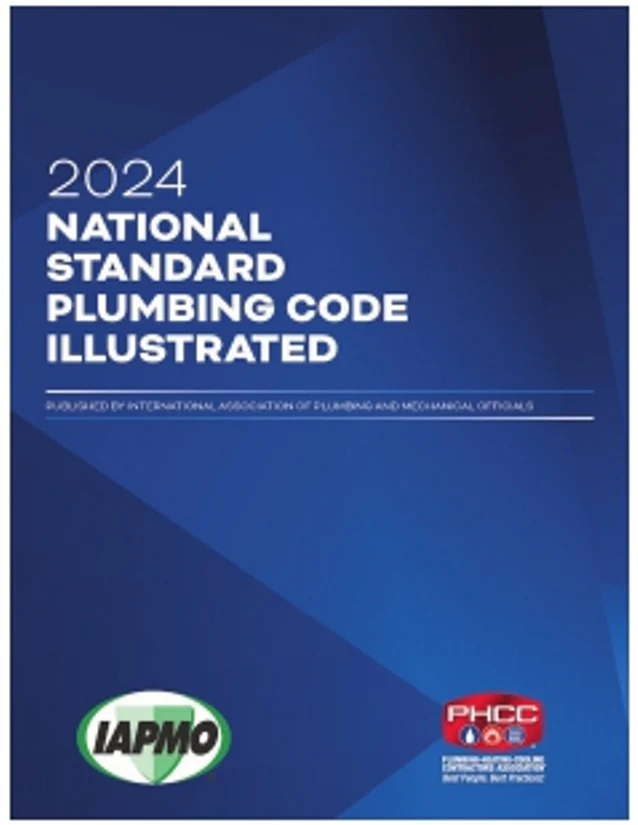Innovative plumbing code technologies are critical to creating sustainable and resilient buildings
Technologies are most effective when recognized and implemented by the entire building industry.

As society continues to place a greater emphasis on creating sustainable and resilient communities, the onus has been placed on the building safety industry to achieve this goal. This can place a great strain on those involved in building safety, including plumbers and tradespersons, especially in today’s competitive landscape. This makes it critical that innovative technologies — whether the new and latest or those with a proven track record — are being utilized by the industry. After all, while our techniques, processes and methods evolve, so too will the equipment and technology we use to ensure our buildings are structurally sound and efficient.
To aid plumbers and tradespersons in staying competitive in the marketplace, innovative technologies and materials must be a priority when crafting and revising provisions within model codes and standards in order to enhance efficiency, positively impact affordability and provide ease of service for those implementing it.
Staying competitive requires technologies that are affordable, efficient and easily implemented
One of the biggest issues plaguing communities worldwide is affordable housing, and the plumbing systems within our homes are a part of this issue. According to the U.S. Department of Housing and Urban Development, an estimated 12 million renter and homeowner households now pay more than 50% of their annual incomes for housing. As this statistic only continues to increase, many building professionals including plumbers and tradespersons often grapple with finding the balance between staying competitive, while also ensuring housing stays affordable.
As we work to create sustainable and resilient communities, we can expect that along with a heavy emphasis on efficiency, affordability will also be a top priority. Therefore, as the foundation of the building industry, it is critical that codes and standards developers account for cost when developing the latest edition of codes and standards, specifically through innovative technologies.
For example, the 2021 International Plumbing Code (IPC) has included new provisions around PVC and ABS push-fit for drain, waste and vent fittings. During the code development process, it was not only acknowledged that each type of piping fitting has its benefits — such as ABS pipes can absorb a higher shock and is better at handling the extreme cold, while PVC piping is more flexible — but it was also found that these fittings will have a direct effect on the construction cost and the use of this push-fit joining method would eliminate the need for solvent cementing.
Likewise, another new provision in the 2021 IPC is the ICC 805 Rainwater Harvesting System standard, which can be utilized as an alternate for nonpotable rainwater systems. ICC 805 further leverages innovative technology that will positively impact affordability and enhance efficiency; it outlines the materials, design, construction and installation for rainwater collection, storage, treatment and distribution of nonpotable water.
As codes and standards continue to evolve to meet the needs of society, we must prioritize technologies and materials that are proven safe, allow the plumbing industry to enhance its efficiency, pass along cost-savings to its customers and provide ease of service. This especially holds true for technologies and materials that have been around for a while and have proven time and again their benefits, such as air admittance valves (AAVs).
The industry needs to prioritize timeless technology and materials
The IPC has been a leader in incorporating timeless technology and materials since its first edition in 1995. This first edition included unrestricted provisions for the use of nonmetallic piping systems, becoming the first national model code to do so, giving contractors and plumbers a cost effective, safe method for incorporating plastic piping into buildings.
In addition, AAVs were also first incorporated into the IPC in 1995. Since its introduction, the benefits of this technology have been well-documented for both commercial buildings and one or two-family dwellings, including positively impacting affordability and increasing efficiency. For example, while the use of an air admittance valve in a plumbing system still requires that at least one stack vent or vent stack extends to the outdoors through the roof or side wall, the technology is compatible with a variety of plumbing systems — from single family applications to multi-story apartments, hotels, hospitals and stadiums. The use and application are not specific to a single type of plumbing system within a specific type of building. Furthermore, these devices will perform their intended function for the life of the plumbing system with little, if any, maintenance required. If maintenance is required, then the AAV can easily be removed from the system and replaced with limited work involved.
As an added bonus, this technology follows stringent product safety standards. AAVs are required to be tested at both high and low temperatures and cycled 250,000 times at a vacuum of up to 2 inches of water column, which is 1 inch of water column above what the typical plumbing trap is to withstand prior to the given trap seal being affected. Further, after the given high and low temperature test — a total of 500,00 cycles — the AAV must pass an incremental pressure test, including a final test of 30 inches of water column, thus being 30 times greater than the anticipated drain, waste and vent system pressure.
Innovative technologies like AAVs are most effective when recognized and implemented by the entire building industry. IAPMO is currently considering adopting these devices into the 2024 edition of the UPC. If approved, plumbers and tradespersons in UPC locations will be able to offer their customers benefits like enhanced efficiency and greater affordability. The Code Council encourages IAPMO members to support these advancements.
Building codes and standards form the foundation of the building industry. In order to be most effective, the feedback from professionals across the industry, especially plumbing and mechanical professionals, is critical so that codes and standards continue to incorporate technology, processes, methods and materials that will most positively impact the built environment and society as a whole.
Looking for a reprint of this article?
From high-res PDFs to custom plaques, order your copy today!








